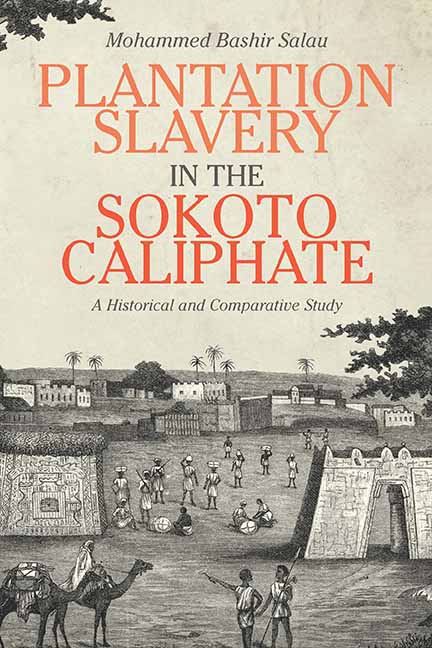Book contents
- Frontmatter
- Contents
- List of Illustrations
- Acknowledgments
- Introduction
- 1 Race and Slavery in the Sokoto Caliphate
- 2 The Roots of Sokoto Caliphate Plantations
- 3 The Course of Plantation Development
- 4 The Types, Structures, and Characteristics of Plantations
- 5 Observations on Slave Origins, Slave Resistance, and Labor Control
- 6 The Significance of Plantations
- 7 Plantations in the New World and in Coastal East Africa Compared
- Conclusion
- Notes
- Bibliography
- Index
7 - Plantations in the New World and in Coastal East Africa Compared
Published online by Cambridge University Press: 23 July 2019
- Frontmatter
- Contents
- List of Illustrations
- Acknowledgments
- Introduction
- 1 Race and Slavery in the Sokoto Caliphate
- 2 The Roots of Sokoto Caliphate Plantations
- 3 The Course of Plantation Development
- 4 The Types, Structures, and Characteristics of Plantations
- 5 Observations on Slave Origins, Slave Resistance, and Labor Control
- 6 The Significance of Plantations
- 7 Plantations in the New World and in Coastal East Africa Compared
- Conclusion
- Notes
- Bibliography
- Index
Summary
Since the 1980s several scholars have opposed the practice of examining Atlantic or world history without incorporating African history. Of these scholars, only two, Lovejoy and Enrico Dal Lago, have engaged with Dale Tomich's three related arguments: that the restructuring of the world economy which took place from the 1780s contributed to the creation and subsequent expansion of new and larger areas of slave-based agriculture in regions previously marginal to the Atlantic economy; that the second slavery of the period after 1780 was modern, in that it was characterized by expansion of production, sheer mobility and adaptability of slave labor, and the use of new techniques by planters; and that in order to properly understand the nature, establishment, and reproduction of the nineteenth-century British-centered world system one must not only focus on the new slave systems in the Americas, but also on other novel features of the Atlantic second slavery phenomenon.
Lovejoy stresses the withdrawal of Muslim/jihad states from the Atlantic world, and argues that the expansion of slavery was not only a phenomenon of the US South, Brazil, and Cuba, but also characterized the jihad states of West Africa. He seems to suggest that caliphate slavery was modern, going by the criteria outlined by Tomich. Dal Lago compares features of the slave societies in the Americas with those of the Sokoto caliphate in order to bring attention to: the unique modernity of New World planters; the common use of slave labor organized in gangs in both the caliphate and the New World; the unique form of slave resistance based on the creation of cultural forms of worship by the enslaved in the American slave societies; and the fact that religion played a major role in the assertion of the slaves’ identity in both the caliphate and the New World.
One major problem of both Dal Lago's and Lovejoy's works, however, is that they neglect East Africa. This chapter fills that gap. It seeks to stress that we should see plantation slavery in coastal East Africa as part of the Atlantic world second slavery phenomenon, and as part of a much wider global change associated with the industrial revolution.
- Type
- Chapter
- Information
- Plantation Slavery in the Sokoto CaliphateA Historical and Comparative Study, pp. 130 - 155Publisher: Boydell & BrewerPrint publication year: 2018



